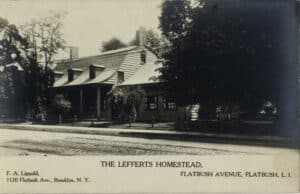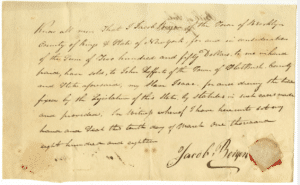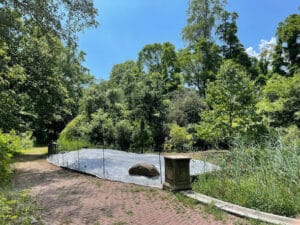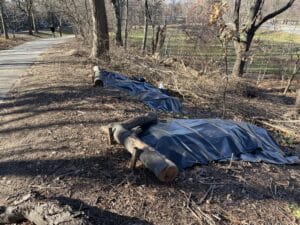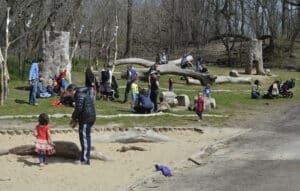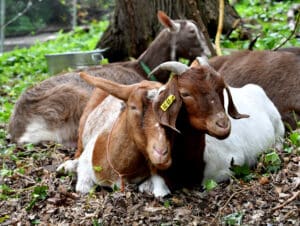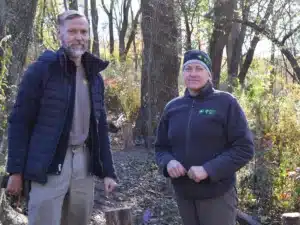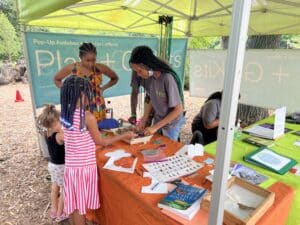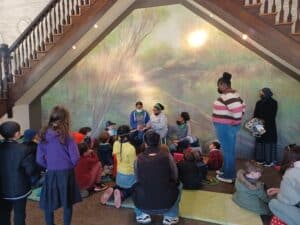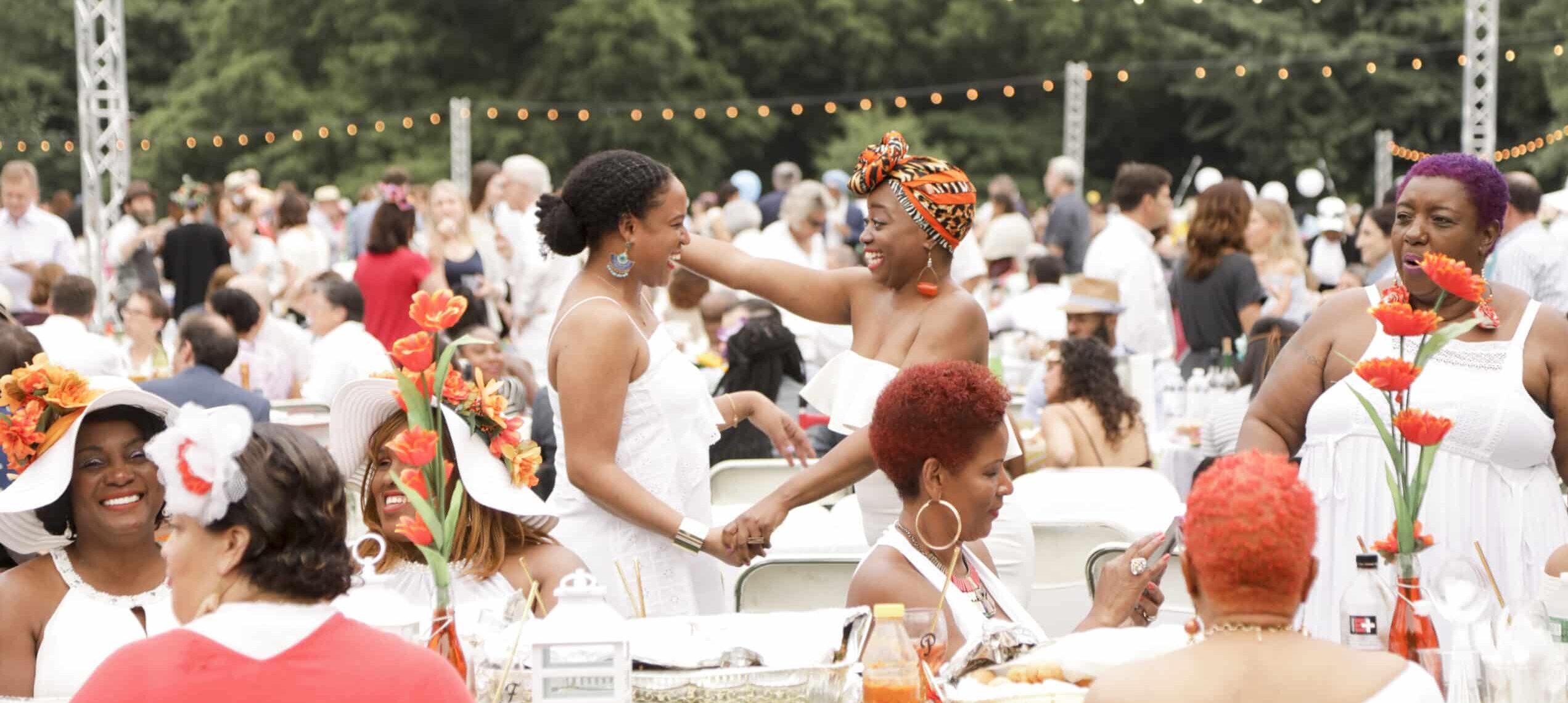Prospect Park Alliance and NYC Parks announced today that longtime New York City public servant Morgan Monaco will become the new President of the Alliance, the non-profit that operates the park in partnership with the City, and also the Prospect Park Administrator, a public appointment by NYC Parks.
Monaco, whose public sector career spans both government and non-profit organizations, brings extensive knowledge of park equity and community development to the position, as well as strong leadership in driving sustainable impact for civic organizations. Monaco is the first Black leader of the Alliance, further diversifying executive leadership within the open space sector, and continues the legacy of female leadership at the Alliance over the course of its 35-year history. Monaco succeeds former Prospect Park Alliance President Sue Donoghue, who was appointed New York City Parks Commissioner earlier this year.
Monaco looks forward to working with the board, staff and most especially park users to help shape her vision for the park’s future. Coming out of the pandemic and recognizing the ways in which the park has been an invaluable resource for New Yorkers to recover, she looks forward to strengthening the organization’s capacity in order to keep pace with the needs of the park community and the robust use of the park. She plans to leverage her experience in working on citywide equity initiatives and serving vulnerable communities to explore the ways in which the Alliance can bring more social services to the park. She hopes to continue to build upon the Alliance’s already extensive network of partners to bring more programs that are focused on health, wellness and other services that help residents thrive.
“On behalf of the Alliance’s Board of Directors, I am thrilled to welcome Morgan Monaco as the new President of Prospect Park Alliance,” said Iris Weinshall, Chair of the Prospect Park Alliance Board of Directors. “Morgan’s extensive parks and social service experience working at community-based nonprofits and city agencies has equipped her with exactly the right knowledge and expertise to successfully lead one of the city’s most cherished green spaces. I am excited to work with Morgan as her vision for Brooklyn’s Backyard comes to life.”
“Prospect Park Alliance has made a tremendous choice in its selection of Morgan Monaco as president. Morgan has experience perfect for the role – as a leader in both public service and public space,” said NYC Deputy Mayor for Operations Meera Joshi. “Congratulations to Morgan on her selection. I’m looking forward to all she can accomplish in one of our city’s greatest assets, Prospect Park.”
“From all of us at NYC Parks, congratulations to Morgan Monaco on her appointment as President of Prospect Park Alliance and Administrator of Prospect Park. We are so excited to welcome Morgan back to the Parks family!” said NYC Parks Commissioner Sue Donoghue. “I know that Prospect Park will thrive under her leadership, and I’m excited to see her ideas come to life and enhance the park experience for Brooklynites and all New Yorkers.”
“I am humbled to be able to take over the helm of such an incredible public amenity. As a born-and-raised New Yorker whose first high school internship was with NYC Parks, it is a dream come true to be able to steward one of the most significant parks in our city,” said Morgan Monaco, Prospect Park Alliance President and Prospect Park Administrator. “I am excited to be joining such an incredible team at a moment where there is unprecedented awareness of and appreciation for the role parks play in the health of our city. I look forward to working with the board and staff to help keep Brooklyn’s Backyard truly welcoming for all New Yorkers.”
About Morgan Monaco
Most recently, Monaco served as Executive Director of the Red Hook Initiative (RHI), a youth and community development nonprofit impacting the 6,500 residents of the Red Hook Houses, Brooklyn’s largest public housing development. Monaco was instrumental in leading RHI through the pandemic and helped to bring in funding relationships and new staff to help stabilize and grow RHI’s impact. Prior to that, Monaco led a team within the New York City Mayor’s Office of Operations where she oversaw various interagency projects and initiatives aimed at improving City service delivery.
A born and raised New Yorker, Monaco recognizes the value parks hold for city dwellers and has cherished urban parks since her childhood, which she spent growing up just outside of Central Park. Earlier in her career, Monaco served two tenures at the New York City Department of Parks and Recreation, first as Director of the MillionTreesNYC Initiative and later as Director of Stewardship for Forestry, Horticulture and Natural Resources. Monaco began her career at StoryCorps, a national oral history project designed to build connections between people and share the stories of Americans from all backgrounds and beliefs.
Morgan has a Master’s in Public Administration and Non-Profit Management from NYU Wagner, as well as a B.A. in International Studies from Vassar College. She lives in Windsor Terrace, Brooklyn, with her husband, a fellow public servant, and their son and two cats, Raymour and Flannigan. Her family is an avid user of Prospect Park.
About Prospect Park Alliance
Prospect Park Alliance is a private, nonprofit organization that operates Prospect Park in partnership with the City of New York, one of the country’s first public-private partnerships to operate an urban park. Celebrating its 35th anniversary this year, the Alliance was founded in 1987 to help restore Prospect Park after a long period of deterioration and decline. Today, the Alliance provides critical staff and resources that keep the park green and vibrant for the diverse communities that call Brooklyn home. The Alliance cares for the woodlands and natural areas, restores the park’s buildings and landscapes, creates innovative park destinations, and provides free and low-cost volunteer, education and recreation programs. Today, Prospect Park is an international model for the care of urban parks, and one of the premier green spaces in the United States.
Over the past decade, Prospect Park Alliance has expanded its operating budget to more than $13 million each year for the care of the park, and increased its endowment to $25 million. In addition, the Alliance has secured more than $130 million in public funding for capital improvements, including the restoration of the Vale in the park’s northeast corner, the largest single capital allocation in the history of the Alliance. Other current and recent projects include the award-winning restorations of the Endale Arch and Concert Grove Pavilion, and the restoration of the Flatbush Avenue perimeter and the creation of two new entrances to the park along Flatbush, the first new entrances to the park since the 1940s.
During the pandemic, when the park saw record visitorship and a drop in public funding, the Alliance was able to rally its community of volunteers and supporters for record volunteer and fundraising success, which resulted in Re:New Prospect Park, an ongoing initiative to sustain the park to address high use during the pandemic via maintenance and capital improvements. Re:New also includes a partnership with ACE New York, a workforce development nonprofit for those experiencing homelessness, which provides a crew to supplement the City’s trash management efforts on peak days in spring through fall.
Other current Alliance initiatives include ReImagine Lefferts, which is re-envisioning the mission and programming of the park’s historic house museum to recognize its role as a site of slavery, and tell the stories—in innovative, inclusive and forward-thinking ways—of the enslaved Africans and the Indigenous people of the Lenapehoking. The Alliance is also working in partnership with NYC Parks and the Department of Cultural Affairs on the creation of a monument to Brooklyn trailblazer Shirley Chisholm at the Parkside and Ocean entrance to Prospect Park, which is also undergoing restoration, by MacArthur Fellow Amanda Williams and Olalekan Jeyifous.
The announcement garnered support from our elected officials and civic leaders:
“I am delighted to welcome Morgan Monaco as the next President of Prospect Park Alliance and Park Administrator,” said Council Member Shahana Hanif, whose district includes Prospect Park. With her extensive experience in parks equity and community development, she is the ideal leader to steward Brooklyn’s Backyard and ensure it remains an accessible and welcoming space for all. I look forward to working with her to advance the park, and engage our constituents in its ongoing care and stewardship.”
“Prospect Park is Brooklyn’s beloved green space, and particularly over the last few years, it has served our communities as a space of reprieve, recreation, and empowerment,” said Council Member Crystal Hudson. “Morgan Monaco is the right person to serve as President of Prospect Park Alliance to further that mission. Under her leadership, I know Prospect Park will continue to expand access to green spaces for all New Yorkers, develop programs that bring our neighborhoods together, and do so in a way that leads our City into the Green future we all deserve. I am so excited to welcome Morgan into the role of President, and look forward to working closely with her to guarantee the Park continues to be a place all New Yorkers can enjoy.”
“Prospect Park is a gem in Brooklyn, and our communities deserve a leader to take the helm of Prospect Park Alliance with the passion and effort that the job requires,” said Council Member Rita Joseph. “Morgan Monaco delivers on those requirements and then some. I’m so excited for her stewardship of our park and to collaborate with her.”
“I’m excited that Morgan Monaco has been selected as new President of the Prospect Park Alliance,” said Council Member Shekar Krishnan, Chair of the Council’s Committee on Parks and Recreation. “Under the thoughtful stewardship of the Alliance, Prospect Park has become one of the crown jewels of New York City’s Parks, serving so many diverse communities across Brooklyn. With her substantial experience at the helm of a non-profit as well as within the Parks Department, I’m confident she will continue the Prospect Park Alliance’s long-standing commitment to park equity and community engagement. I look forward to working closely with her.”
“I am confident that the selection of Morgan Monaco as the new President of the Prospect Park Alliance will give the park the kind of dynamic, competent and experienced leadership it needs,” said Assembly Member Robert Carroll, whose district includes the park. “As a lifelong New Yorker and mother I know Ms. Monaco has a personal stake in maintaining the vitality of our beloved Prospect Park. Ms. Monaco’s work as the Director of the MillionTreesNYC Initiative and as Director of Stewardship for Forestry, Horticulture and Natural Resources has prepared her well to care for Brooklyn’s 526-acre urban oasis. Millions of Brooklynites depend on a healthy, well-maintained and safe Prospect Park, now more than ever. I look forward to working with Ms. Monaco and the Alliance to make sure that Prospect Park stays that way for my constituents, and for all of Brooklyn.”
“On behalf of Brooklyn Community Foundation, I am thrilled to congratulate Morgan Monaco on her appointment as President of Prospect Park Alliance and making history as the first Black woman to lead this essential institution for our borough,” said Dr. Jocelynne Rainey, President and CEO, Brooklyn Community Foundation. “Her experience in city government and local nonprofits, including most recently leading the Red Hook Initiative, makes her uniquely qualified for this position. Anyone who knows Brooklyn knows how much the park means to our communities, and I am excited to see how she builds on the Alliance’s work to ensure that the park is a place of equity, deepening its connections to the diversity of Brooklyn’s communities, while bringing our communities together in this incredible public treasure.”
“Morgan’s extensive social services and parks background makes her a perfect choice to lead the Prospect Park Alliance,” said Richard Buery, CEO of Robin Hood and former NYC Deputy Mayor for Strategic Policy Initiatives. “I’ve seen firsthand: Morgan doesn’t just believe in inclusive policy solutions — she knows how to enact them. I look forward to seeing how Prospect Park will continue to thrive as a place that welcomes all New Yorkers under Morgan’s leadership.”
Learn more about Prospect Park Alliance.
